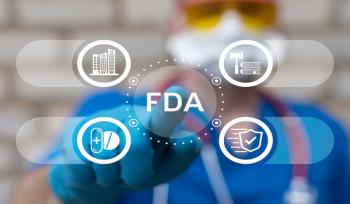
Fruit and Vegetables Outperform Medication and Baking Soda to Treat Hypertension
Patients with hypertension-related chronic kidney disease who increased daily fruit and vegetable consumption showed improved cardiovascular health and reduced blood pressure compared with participants who added baking soda to their diet or who received pharmacological-only treatment.
A five-year interventional randomized control trial of patients with
Cardiovascular mortality related to hypertension-related chronic kidney disease is on the rise. The Dietary Approaches to Stop Hypertension (DASH) diet is already recommended as the first line of treatment for the condition. But the intervention is under-prescribed, and when it is prescribed, it is under-implemented, the authors wrote.
“Diet should be foundational in the management of hypertension, kidney and heart disease. A healthy diet and medications go together. But we clinicians often focus more on the medications and not so much on the diet,” Donald E. Wesson, MD, MBA, lead investigator, told the American Journal of Managed Care® (AJMC®). “Even when diets high in fruit and vegetables are prescribed, it’s difficult for patients to adhere to them. This is because our modern diets are very highly acid-producing due to their high amounts of animal products, which our bodies process to produce acid, and low amounts of fruit and vegetables, which our bodies process to produce base that neutralizes acid. In our study, that ratio was reversed, meaning that study participants given fruits and vegetables ate more of these foods than animal products. Fruit and vegetables achieved outstanding outcomes at lower doses of medications.”
The 153 study participants aged 18 to 70 recruited from the Texas Tech University Health Sciences Center Clinic System had hypertension and macroalbuminuria, but normal kidney function. Patients with diabetes and a history of cardiovascular disease were excluded. Participants added 2-4 cups of base-producing fruit and vegetables to their usual daily diet; consumed two daily doses of 4-5 650 mg tablets of baking soda; or received standard medical care from primary care doctors. The diet and baking soda groups received standard medical care, including medication, during the study.
Potential renal acid load decreased in the group given fruit and vegetables (P < .001) every year after baseline. The groups receiving usual medical care with or without a baking soda prescription did not see a decrease in potential renal acid load (P > .354).
Patients who added baking soda to their diet showed improved kidney health, but blood pressure and heart disease risk did not improve.
“We were surprised by the results. We thought the two ways of lowering the acid in diet—giving baking soda or fruit and vegetables—would promote kidney and heart health. Both ways did promote kidney health. But only fruit and vegetables achieved both kidney and heart benefits,” Wesson told AJMC®.
Each participant’s prescribed amount of produce was calculated to reduce participants’ potential renal acid load by roughly half. Prescribed daily baking soda amount was calculated to be equivalent to the alkalizing effect of the amount of produce given to the fruit-and-vegetable group.
Fruit and vegetables ideal for reducing acid were selected for the study and included mainly apples, apricots, oranges, peaches, pears, raisins, strawberries, carrots, cauliflower, eggplant, potatoes, spinach, tomatoes and zucchini.
Participants in the diet-altering group received fruit and vegetables free of charge from a church-based farm stand. Researchers ensured adherence to the diet through urine samples and analysis of participants’ food diaries.
All participants resided in Lubbock, Texas and were low-income, with little access to fresh fruit and vegetables, Wesson told AJMC®.
Roughly 18.8 million Americans, or 6.1% of the US population, live in "food deserts," where a supermarket is at least 1 mile away from home, according to the USDA.2
“Rather than thinking about this fruit and vegetable intervention as physician to patient, we like to think of it as an intervention from society to communities that are already at higher risk of hypertension, kidney and heart disease,” Wesson commented.
References
- Goraya N, Madias NE, Simoni J, Kahlon M, Aksan N, Wesson DE. Kidney and cardiovascular protection using dietary acid reduction in primary hypertension: a five-year, interventional, randomized, control trial. Am J Med. 2024:S0002-9343(24)00357-7. doi: 10.1016/j.amjmed.2024.06.006
- Food Access Research Atlas. USDA.gov. Updated October 20, 2022. Accessed August 6, 2024.
https://www.ers.usda.gov/data-products/food-access-research-atlas/documentation/#:~:text=This%20measure%20shows%20that%20an,miles%20for%20a%20rural%20area
Newsletter
Stay ahead of policy, cost, and value—subscribe to AJMC for expert insights at the intersection of clinical care and health economics.













































